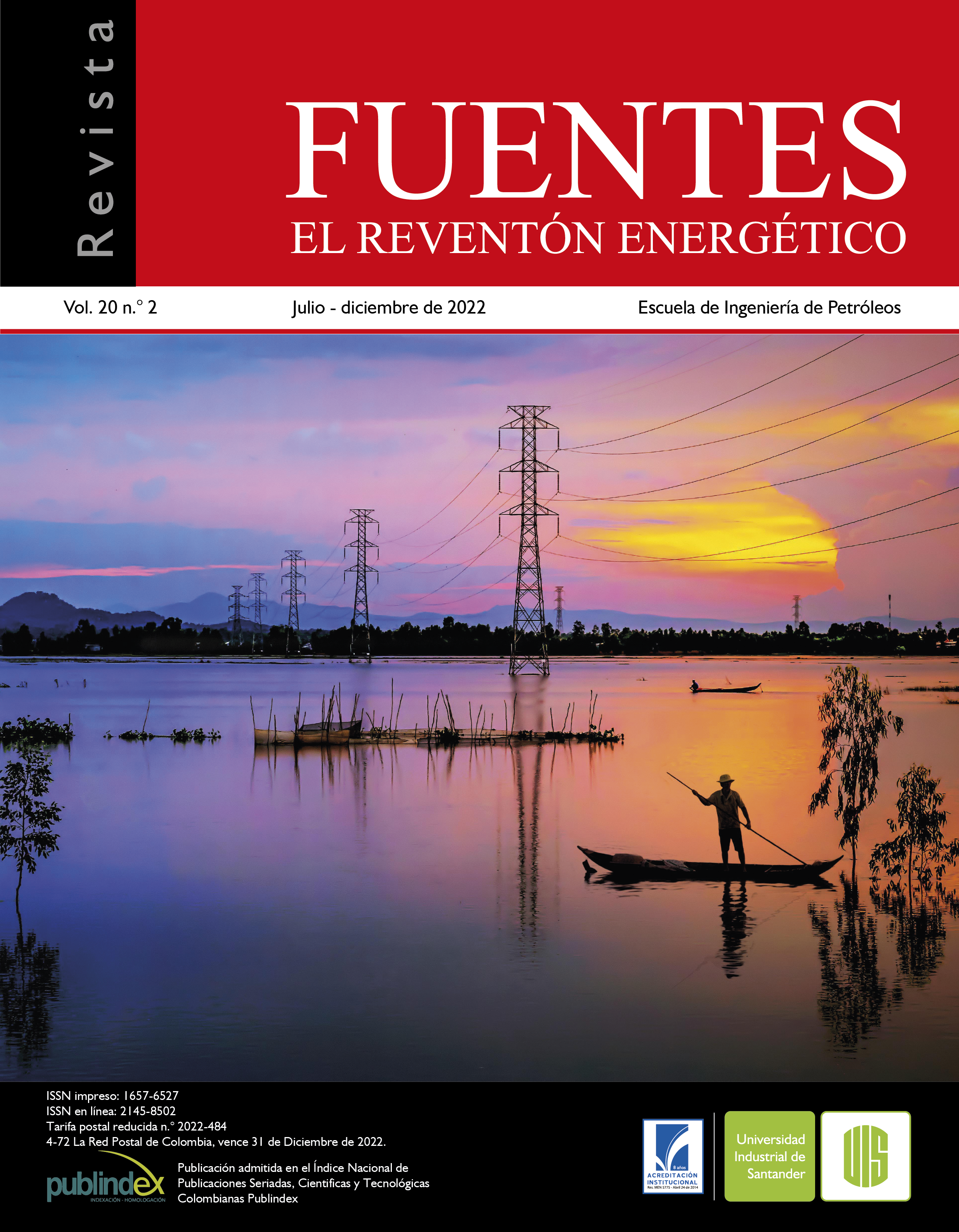Metodología para la caracterización energética de procesos industriales basada en modelos de regresión bayesianos. Caso de implementación.
Published 2022-10-23
Keywords
- Energy efficiency;,
- pumping systems;,
- bayesian regression;,
- model selection
How to Cite
Copyright (c) 2022 Universidad Industrial de Santander

This work is licensed under a Creative Commons Attribution 4.0 International License.
Abstract
This work presents the design and development of a novel methodology based on statistical techniques, which allows to perform
an energy characterization of industrial processes in compliance with the guidelines of the international standard NTC ISO
50001:2019, its implementation is recommended by the Mining-Energy Planning Unit. in the 2022-2030 version of the Indicative
Plan of the Program for the Rational and Efficient Use of Energy in Colombia. The ISO 50001 standard requires having a
quantitative reference (energy baseline) for the energy performance of the process. This paper proposes to calculate the energy
baseline through Bayesian regression models. This methodology also allows to identify the variables or events that have greater
relevance in the energy efficiency of the process, to implement control over them at a later stage and thus improve the energy
performance of the process by manipulating these variables.
Downloads
References
- Beier, P., Burnham, K. P., & Anderson, D. R. (2001). Model selection and inference: A practical information-theoretic approach. In The Journal of Wildlife Management (Vol. 65, Issue 3). Springer. https://doi.org/10.2307/3803117
- Breusch, T. S., & Pagan, A. R. (1979). A simple test for Heteroscedasticity and random coefficient variation. Econometrica, 47(5), 1287–1294.
- Caicedo, O. F. P., Avella, J. C. C., Rodríguez, D. B. R., & Salas, A. P. (2019). Implementación de un sistema de Gestión de la Energía Guía con base en la norma ISO.
- Campos, J. (2017). Línea base, indicadores de desempeño energético. Aportes y Experiencias Practicas Del Grupo de Investigación Gestión Energética de La UA y de La ESCO E2 Energía Eficiente S.A.E.S.P. http://guiaiso50001.cl/guia/wp-content/uploads/2017/05/linea-base-indicadores-de-desempeno-P-3-AP-1.pdf
- CFI. (2021). Durbin Watson statistic. CFI Education Inc. https://corporatefinanceinstitute.com/resources/knowledge/other/durbin-watson-statistic/
- Chen, Y., & Therkelsen, P. (2019). The effect of linear regression modeling approaches on determining facility wide energy savings. April, 37.
- Cohen, J. (1988). Power analysis for the behavioral sciences (2nd ed.)
- De Maesschalck, R., Jouan-Rimbaud, D., & Massart, D. L. (2000). The mahalanobis distance. Chemometrics and Intelligent Laboratory Systems, 50(1), 1–18. https://doi.org/10.1016/S0169-7439(99)00047-7
- Ellis, P. (2010). The essential guide to effect sizes. Cambridge.
- Flores Muñoz, P., Muñoz Escobar, L., & Sánchez Acalo, T. (2019). Estudio de potencia de pruebas de normalidad usando distribuciones desconocidas con distintos niveles de no normalidad. Perfiles, 1(21), 4–11. https://doi.org/10.47187/perf.v1i21.42
- Hastie, T., Tibshirani, R., & Friedman, J. (2008). The elements of statistical learning (2nd ed.). Springer.
- NTC-ISO 50001, (2019).
- Li, X., Deng, S., Li, L., & Jiang, Y. (2019). Outlier detection based on robust mahalanobis distance and its application. Open Journal of Statistics, 09(01), 15–26. https://doi.org/10.4236/ojs.2019.91002
- Minambiente. (2020). Colombia reducirá en un 51% sus emisiones de gases efecto invernadero para el
- año 2030 | Ministerio de Ambiente y Desarrollo Sostenible. https://www.minambiente.gov.co/asuntos-ambientales-sectorial-y-urbana/colombia-reducira-en-un-51-sus-emisiones-de-gases-efecto-invernadero-para-el-ano-2030/
- Moreno, E., & Girón, F. J. (2008). Comparison of Bayesian objective procedures for variable selection in linear regression. Test, 17(3), 491–492. https://doi.org/10.1007/s11749-008-0095-9
- Mukherjee, A., & Laha, M. (2019). Problem of autocorrelation in linear regression detection and remedies. International Journal of Multidisciplinary Research and Modern Education, 5(1), 105–110.
- Nagin, D. S. (1999). Analyzing developmental trajectories: A semiparametric, group-based approach. Psychological Methods, 4(2), 139–157. https://doi.org/10.1037/1082-989X.4.2.139
- Plan de acción Indicativo del PROURE 2022-2030, 2022.
- Rodríguez, M. D. (2011). Regresión lineal simple. Estadística Inferencial Aplicada. https://doi.org/10.2307/j.ctvswx88n.8
- RPubs. (2021). Linear regression confidence intervals. https://rpubs.com/aaronsc32/simple-linear-regression
- S. Shapiro, & M. Wilk. (2015). The Shapiro-Wilk and related test for normality. Statistics, 1, 1–12.
- Santibáñez, J. (2018). Verificación del supuesto de homocedasticidad. UNAM. http://sigma.iimas.unam.mx/jsantibanez/Cursos/Ciencias/2018_1/08_homocedasticidad.html
- Walpole, R., Myers, R., & Myers, S. (2012). Pro babilidad y estadística para ingeniería y ciencia. Pearson.
- Wood, F. (2010). Matrix approach to linear re gresssion. Columbia University. http://www.stat.columbia.edu/~fwood/Teaching/w4315/Fall2009/lecture_11
